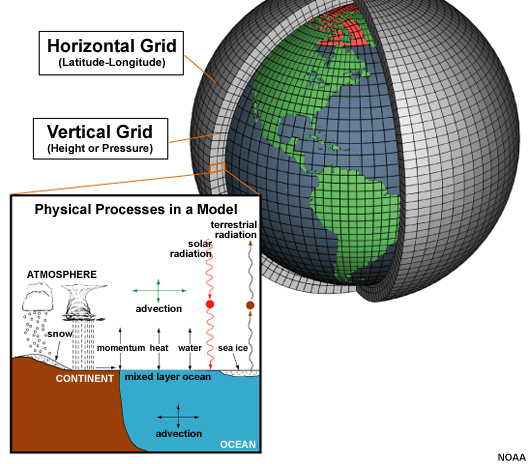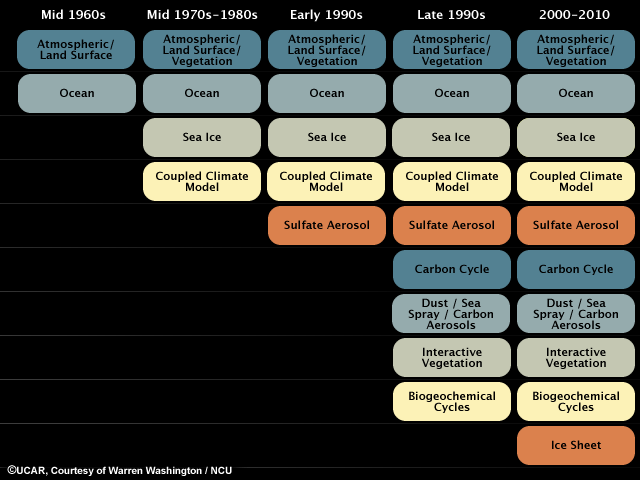What They Are

Global climate models simulate the chemical and physical processes that drive Earth's climate. These models are used to study Earth's past climate changes, and they are an important tool to check our understanding of how climate processes work. Models are also the only way we have to evaluate how the climate might change in the future. In other words, they are a big part of how we come to understand climate science.

Much like the models that broadcast meteorologists use to issue weather forecasts, climate models simulate Earth's climate system with a 3-dimensional grid that extends through the land, ocean, and atmosphere. The grid may have 10 to 60 different levels in the atmosphere and surface grid spacings of about 60 by 90 miles (100 by 150 km)—the size of Connecticut. The models perform trillions of calculations that describe changes in many climate factors in the grid.
The models project possible climates based on scenarios that cover a range of assumptions about global population, greenhouse gas emissions, technologies, fuel sources, etc. The model results provide a range of possible impacts based on these assumptions.

In the 1960's when climate science was in its infancy, these models were relatively limited. New components and better resolution in the decades since have greatly improved the models. However, it's worth noting that even early on, the relatively crude models already showed many of the features that have been observed today, such as the greater warming in higher latitudes relative to lower latitudes.